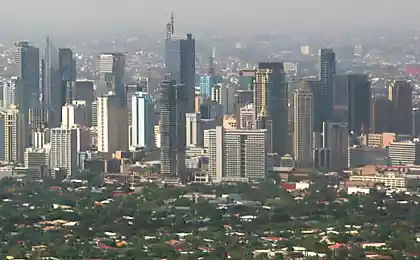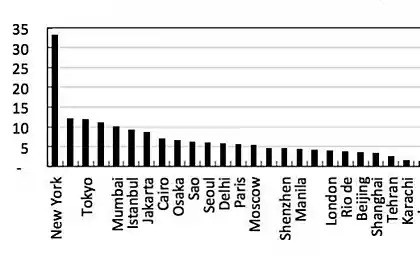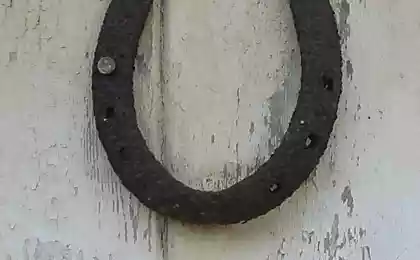888
10 worst places for civilized life on our planet
Today I want to tell you about the "top ten" places of our planet, which you would not have wanted to live ... read more.
Cité Soleil, Port-au-Prince, Haiti
"Sun City" (so translated name of the district) is located on the outskirts of the Haitian capital of Port-au-Prince. Most of the buildings is the slums and huts, in Cité Soleil dominated by poverty and crime is rampant. Streets drown in the mountains of garbage and sewage, sanitation is not here, so the area has long been a hotbed of dangerous diseases and viruses - the average life expectancy is less than 50 years old.
The police is trying not to appear in Cité Soleil, so there are all run by drug traffickers and kidnappers. According to representatives of the "Red Cross" slums "City of the Sun" - is the quintessence of all the Haitian problem: rampant unemployment, lack of education, lack of public organizations and services, unsanitary conditions, rampant crime and armed violence - all this can be found in virtually every corner of the archipelago but it is one of the districts of the capital manifested most clearly.
Trying to restore order in the slums of the UN in the year 2004 decided to introduce a limited military contingent in the area of Cité Soleil, peacekeepers managed to largely defuse the situation, but some problems remain. For some time the United Nations retained control of the area, but after the devastating earthquake of 2010, riots broke out with renewed vigor. Three thousand bombers under cover managed to escape from the prison, located near the Cité Soleil, and is now a gang of armed thugs still strikes fear in the peaceful local people.
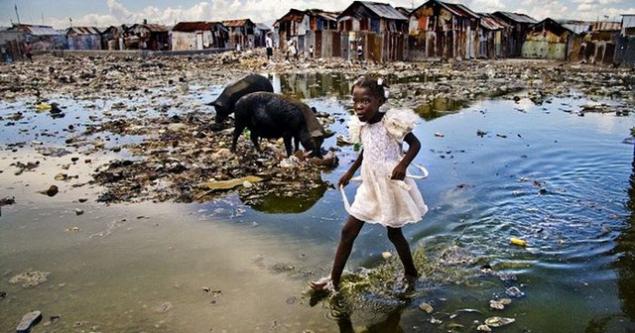
Favelas of Rio de Janeiro, Brazil
Rio, lying on the Atlantic coast, is incredibly beautiful. Thousands of tourists come here to admire the statue of Christ the Redeemer, to participate in the colorful carnivals and sunbathe on the beaches of Copacabana. However, there is another face of the city, virtually unknown to tourists idle amateur Brazilian sun and cool mojito: on the outskirts of Rio de Janeiro's favelas spread wide - disadvantaged areas, consisting mainly of squalid shacks and huts.
The notorious favela Rosin has long been a transit point of drug traffickers, the cocaine shipped to Europe and the close cooperation of corrupt authorities and criminal world has meant that the gang leaders there feel privileged to live in prosperity and even luxury.
One of the most notorious and famous drug lords in Rio until recently was Erismar Rodrigues Moreira, known as Bem-Te-Vi (Bem-Te-Vi - insectivorous bird, leading Brazil). His accomplices committed many brutal murders and gang Moreira was known that its members had a passion for gold-plated firearms. In 2005, the security services conducted an elaborate operation to arrest members of the gang, however, as a result of gunfire Moreira was killed.
On the eve of the Summer Olympic Games 2016 to be held in Rio de Janeiro, the city authorities are struggling to improve the situation in the favelas, some positive changes have already taken place.
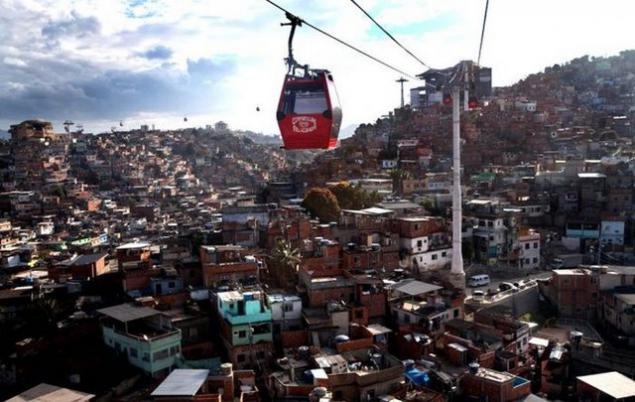
Detroit, Michigan, USA
Detroit once was the center of the automobile industry of the United States, is experiencing hard times. Once he wore a proud nickname "Motor City", but now the streets and factories came to desolation: because of reduced production from the 2000 Detroit left about 25% of the population, many are selling their homes for pennies and leave in search of better . The abandoned dwellings breed stray dogs - it is one of the main problems in Detroit. Tens of thousands of dogs, most of which are pit bulls, roam the streets, threatening all living things.
July 19, 2013, the year the administration of Detroit filed for bankruptcy cities and debt obligations of $ 19 billion. The crisis has affected many residents of "Motor City" - the unemployment rate now stands at 16, 3%, many people are forced to sell their property to pay bills for utilities services. According to the FBI and the US Justice Department, the three Detroit area are included in the list of the most criminal areas of the country.

Ciudad Juarez, Mexico
The town, located in the northern Mexican state of Chihuahua, in recent decades has become a battleground between the various drug cartels and criminal gangs. In 2009, the year in Ciudad Juarez came in first place in the number of murders per capita - the level reached 130-year-violent deaths per 100 thousand people. And this is only the official statistics - in fact, killed a few more, as a significant part of them are buried in mass graves, and people reported missing.
Especially dangerous life in the city for women: rape are fairly common, and only in the last 20 years, hundreds of women were killed in such incidents.
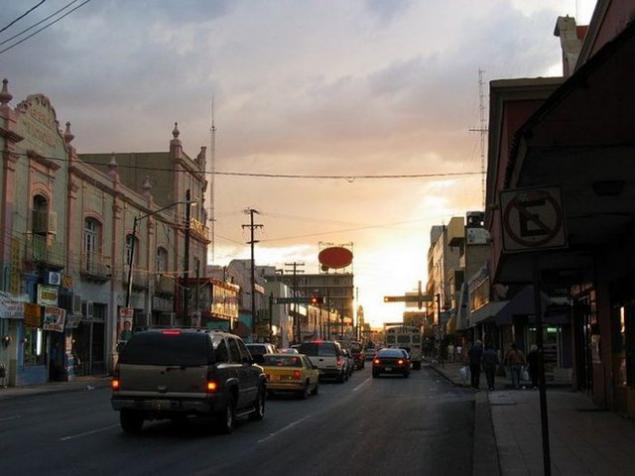
Medellin, Colombia
In the 1980s, during the cartel, Pablo Escobar and his troops, Medellin was the most violent city in the world - human life here was simple bargaining chip in dealings of the local "businessmen". In 1993. Escobar was killed while resisting the police, and the crime rate decreased slightly: in 1991, there were 6,500 murders in 2009, became victims of criminals 2899 people.
In addition to the banal killings and looting other common "job" in the local "labor exchange" - blackmail and kidnapping, which, however, are not very different from the methods of the first and second. Typically, the scheme is simple enough: a group of armed men surrounded by tourists and offers to go to the ATM to remove the credit card repayment, threatening otherwise to take the victim to an unknown destination.
Recently, because of the animosity between the two gangs, the situation in the city has worsened considerably.

Neighborhood Brownsville, Brooklyn, USA
In Brooklyn, as well as in the whole of New York, have disadvantaged neighborhoods, but Brownsville stands out. Most of it is made up of apartment buildings where people live with low incomes. Due to the tense social situation in Brownsville crime rate is much higher than the city average.
Most of the offenses in the area associated with drug trafficking. Of course, now Braunville much quieter than in the 1980s and 1990s, however, many transport companies are still sending their cars here only accompanied by armed guards. Poverty and lack of exercise have led to the fact that some young people are literally forced his fists to fight their way to success is not accidental many famous boxers grew up in Brownsville, including Mike Tyson.
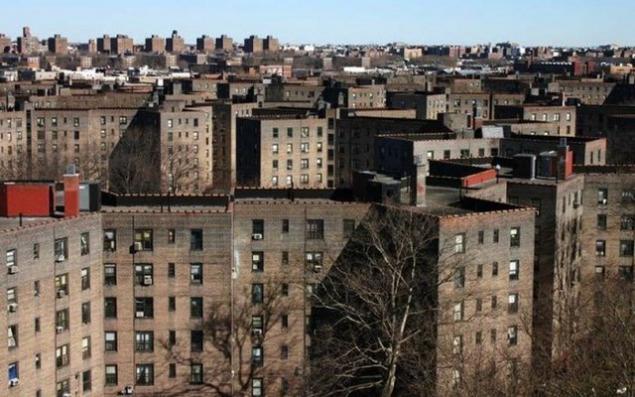
District of La Perla, San Juan, Puerto Rico
On the outskirts of the city of San Juan, now known as La Perla, once lived in the main butchers - on every street corner was slaughterhouses and butchers. Who is chosen by the slum South American mafia, which uses them as a transshipment base for sending contraband and drugs in the United States.
Despite the extreme poverty of the local inhabitants, La Perla is quite beautiful for its beaches, colorful houses and beautiful nature. In recent years, Puerto Rico's drug cartels have become the object of attention of law enforcement and intelligence agencies - every year there are hundreds of arrests of persons involved in drug trafficking.
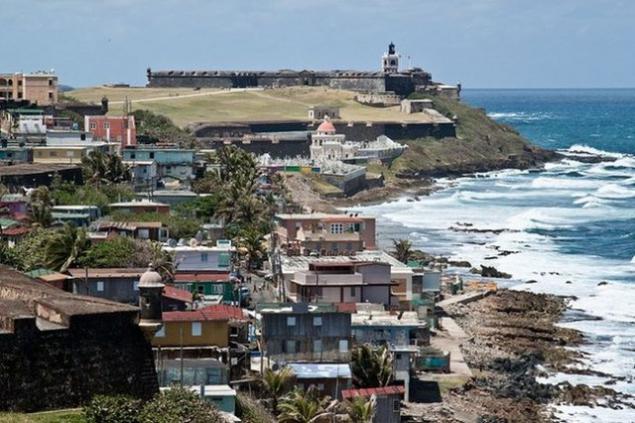
The Ferghana Valley, Uzbekistan, Kyrgyzstan, Tajikistan
After the collapse of the Soviet Union, many fraternal republics had hard times: the production and the economy as a whole have declined, and in addition, many social contradictions have become aggravated. In some areas, tensions reached a maximum high level, for example, in the Ferghana Valley, which is located right in the three former socialist republics - Tajik, Uzbek and Kyrgyz.
The depression between two mountain chains has become a real pot of "cooked" several nationalities, and each of them after the collapse of the Soviet Union actively defend their rights, including at the most legitimate means. Radical Islamic beliefs of certain groups of the population and a sharp decline in living standards only added fuel to the fire: from Fergana reached thousands of refugees who have not found their place in the changing political and social circumstances.
Even 20 years later, the Ferghana Valley remains a battleground between the ethnic groups and the government. For example, May 13 of 2005 in clashes with law enforcement officials protesting against the trials of members of criminal groups were killed according to official figures 187 people. However, other sources say more than a thousand killed - presumably many bodies were buried secretly to hide the true extent of the tragedy.
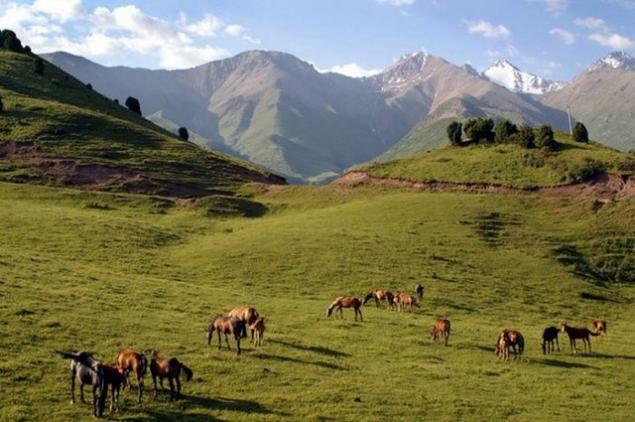
Kibera, Nairobi, Kenya
Nairobi was founded by the British as the headquarters of the railway, and soon the city became one of the centers of the African continent and remains them so far. Despite the large number of Europeans and tourists in Nairobi, in some areas of white, as well as local residents, it is better not to appear, one such criminal ghetto - Kibera.
Nairobi administration prefers not to interfere in the life of the inhabitants of the area, resulting in Kibera was the refuge of various thugs and crooks, for example, electricity is available not for everyone because the attackers used most of it for their own purposes. There is no water and sewage systems, most of the water is infected with bacteria of typhoid and cholera, and the toilets are pit latrines serve hundreds of residents.
About half of the able-bodied residents of Kibera are unemployed, many women are trying to make a living as prostitutes, they do not stop growing, even from year to year the number of crimes of a sexual nature.
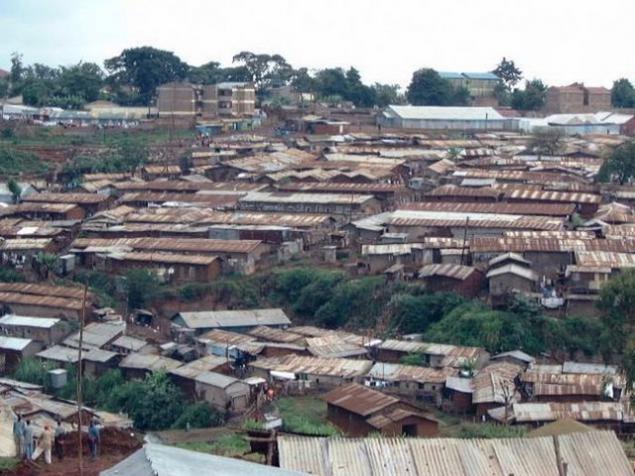
The walled city of Kowloon, Hong Kong, China
Kowloon Chinese for many years served as a military fort, but in the end the XIX-th century, when the British leased Hong Kong, the settlement was largely self-contained, residents actually granted the right to self-government. During the Japanese occupation of China's population of the walled city has increased significantly, and as of the year 1987 was about 33 thousand people, despite the fact that they resided in the territory of about 0, 026 km².
For many years this was the Kowloon headquarters "Triad", the most powerful Chinese crime syndicate, but the authorities turned a blind eye to it, because of the existence of brothels, opium dens and casinos considerable benefits received not only the Chinese mafia and corrupt officials.
In the early 1990s, China has finally decided to tackle this problem closely: Kowloon residents moved to more prosperous areas, the slum was razed to the ground, keeping only a few historic buildings, and in 1995, on the site of the same name was opened in Kowloon Park.
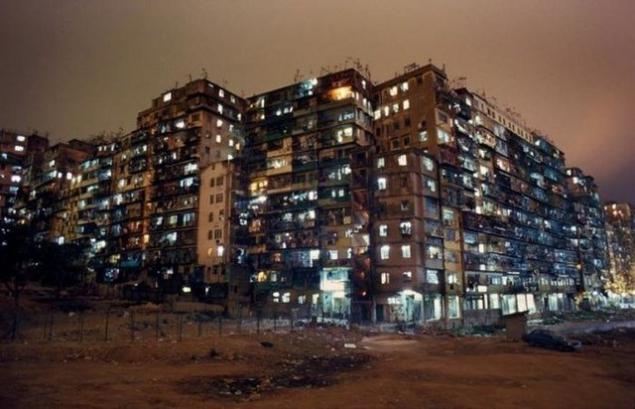
From
Cité Soleil, Port-au-Prince, Haiti
"Sun City" (so translated name of the district) is located on the outskirts of the Haitian capital of Port-au-Prince. Most of the buildings is the slums and huts, in Cité Soleil dominated by poverty and crime is rampant. Streets drown in the mountains of garbage and sewage, sanitation is not here, so the area has long been a hotbed of dangerous diseases and viruses - the average life expectancy is less than 50 years old.
The police is trying not to appear in Cité Soleil, so there are all run by drug traffickers and kidnappers. According to representatives of the "Red Cross" slums "City of the Sun" - is the quintessence of all the Haitian problem: rampant unemployment, lack of education, lack of public organizations and services, unsanitary conditions, rampant crime and armed violence - all this can be found in virtually every corner of the archipelago but it is one of the districts of the capital manifested most clearly.
Trying to restore order in the slums of the UN in the year 2004 decided to introduce a limited military contingent in the area of Cité Soleil, peacekeepers managed to largely defuse the situation, but some problems remain. For some time the United Nations retained control of the area, but after the devastating earthquake of 2010, riots broke out with renewed vigor. Three thousand bombers under cover managed to escape from the prison, located near the Cité Soleil, and is now a gang of armed thugs still strikes fear in the peaceful local people.

Favelas of Rio de Janeiro, Brazil
Rio, lying on the Atlantic coast, is incredibly beautiful. Thousands of tourists come here to admire the statue of Christ the Redeemer, to participate in the colorful carnivals and sunbathe on the beaches of Copacabana. However, there is another face of the city, virtually unknown to tourists idle amateur Brazilian sun and cool mojito: on the outskirts of Rio de Janeiro's favelas spread wide - disadvantaged areas, consisting mainly of squalid shacks and huts.
The notorious favela Rosin has long been a transit point of drug traffickers, the cocaine shipped to Europe and the close cooperation of corrupt authorities and criminal world has meant that the gang leaders there feel privileged to live in prosperity and even luxury.
One of the most notorious and famous drug lords in Rio until recently was Erismar Rodrigues Moreira, known as Bem-Te-Vi (Bem-Te-Vi - insectivorous bird, leading Brazil). His accomplices committed many brutal murders and gang Moreira was known that its members had a passion for gold-plated firearms. In 2005, the security services conducted an elaborate operation to arrest members of the gang, however, as a result of gunfire Moreira was killed.
On the eve of the Summer Olympic Games 2016 to be held in Rio de Janeiro, the city authorities are struggling to improve the situation in the favelas, some positive changes have already taken place.

Detroit, Michigan, USA
Detroit once was the center of the automobile industry of the United States, is experiencing hard times. Once he wore a proud nickname "Motor City", but now the streets and factories came to desolation: because of reduced production from the 2000 Detroit left about 25% of the population, many are selling their homes for pennies and leave in search of better . The abandoned dwellings breed stray dogs - it is one of the main problems in Detroit. Tens of thousands of dogs, most of which are pit bulls, roam the streets, threatening all living things.
July 19, 2013, the year the administration of Detroit filed for bankruptcy cities and debt obligations of $ 19 billion. The crisis has affected many residents of "Motor City" - the unemployment rate now stands at 16, 3%, many people are forced to sell their property to pay bills for utilities services. According to the FBI and the US Justice Department, the three Detroit area are included in the list of the most criminal areas of the country.

Ciudad Juarez, Mexico
The town, located in the northern Mexican state of Chihuahua, in recent decades has become a battleground between the various drug cartels and criminal gangs. In 2009, the year in Ciudad Juarez came in first place in the number of murders per capita - the level reached 130-year-violent deaths per 100 thousand people. And this is only the official statistics - in fact, killed a few more, as a significant part of them are buried in mass graves, and people reported missing.
Especially dangerous life in the city for women: rape are fairly common, and only in the last 20 years, hundreds of women were killed in such incidents.

Medellin, Colombia
In the 1980s, during the cartel, Pablo Escobar and his troops, Medellin was the most violent city in the world - human life here was simple bargaining chip in dealings of the local "businessmen". In 1993. Escobar was killed while resisting the police, and the crime rate decreased slightly: in 1991, there were 6,500 murders in 2009, became victims of criminals 2899 people.
In addition to the banal killings and looting other common "job" in the local "labor exchange" - blackmail and kidnapping, which, however, are not very different from the methods of the first and second. Typically, the scheme is simple enough: a group of armed men surrounded by tourists and offers to go to the ATM to remove the credit card repayment, threatening otherwise to take the victim to an unknown destination.
Recently, because of the animosity between the two gangs, the situation in the city has worsened considerably.

Neighborhood Brownsville, Brooklyn, USA
In Brooklyn, as well as in the whole of New York, have disadvantaged neighborhoods, but Brownsville stands out. Most of it is made up of apartment buildings where people live with low incomes. Due to the tense social situation in Brownsville crime rate is much higher than the city average.
Most of the offenses in the area associated with drug trafficking. Of course, now Braunville much quieter than in the 1980s and 1990s, however, many transport companies are still sending their cars here only accompanied by armed guards. Poverty and lack of exercise have led to the fact that some young people are literally forced his fists to fight their way to success is not accidental many famous boxers grew up in Brownsville, including Mike Tyson.

District of La Perla, San Juan, Puerto Rico
On the outskirts of the city of San Juan, now known as La Perla, once lived in the main butchers - on every street corner was slaughterhouses and butchers. Who is chosen by the slum South American mafia, which uses them as a transshipment base for sending contraband and drugs in the United States.
Despite the extreme poverty of the local inhabitants, La Perla is quite beautiful for its beaches, colorful houses and beautiful nature. In recent years, Puerto Rico's drug cartels have become the object of attention of law enforcement and intelligence agencies - every year there are hundreds of arrests of persons involved in drug trafficking.

The Ferghana Valley, Uzbekistan, Kyrgyzstan, Tajikistan
After the collapse of the Soviet Union, many fraternal republics had hard times: the production and the economy as a whole have declined, and in addition, many social contradictions have become aggravated. In some areas, tensions reached a maximum high level, for example, in the Ferghana Valley, which is located right in the three former socialist republics - Tajik, Uzbek and Kyrgyz.
The depression between two mountain chains has become a real pot of "cooked" several nationalities, and each of them after the collapse of the Soviet Union actively defend their rights, including at the most legitimate means. Radical Islamic beliefs of certain groups of the population and a sharp decline in living standards only added fuel to the fire: from Fergana reached thousands of refugees who have not found their place in the changing political and social circumstances.
Even 20 years later, the Ferghana Valley remains a battleground between the ethnic groups and the government. For example, May 13 of 2005 in clashes with law enforcement officials protesting against the trials of members of criminal groups were killed according to official figures 187 people. However, other sources say more than a thousand killed - presumably many bodies were buried secretly to hide the true extent of the tragedy.

Kibera, Nairobi, Kenya
Nairobi was founded by the British as the headquarters of the railway, and soon the city became one of the centers of the African continent and remains them so far. Despite the large number of Europeans and tourists in Nairobi, in some areas of white, as well as local residents, it is better not to appear, one such criminal ghetto - Kibera.
Nairobi administration prefers not to interfere in the life of the inhabitants of the area, resulting in Kibera was the refuge of various thugs and crooks, for example, electricity is available not for everyone because the attackers used most of it for their own purposes. There is no water and sewage systems, most of the water is infected with bacteria of typhoid and cholera, and the toilets are pit latrines serve hundreds of residents.
About half of the able-bodied residents of Kibera are unemployed, many women are trying to make a living as prostitutes, they do not stop growing, even from year to year the number of crimes of a sexual nature.

The walled city of Kowloon, Hong Kong, China
Kowloon Chinese for many years served as a military fort, but in the end the XIX-th century, when the British leased Hong Kong, the settlement was largely self-contained, residents actually granted the right to self-government. During the Japanese occupation of China's population of the walled city has increased significantly, and as of the year 1987 was about 33 thousand people, despite the fact that they resided in the territory of about 0, 026 km².
For many years this was the Kowloon headquarters "Triad", the most powerful Chinese crime syndicate, but the authorities turned a blind eye to it, because of the existence of brothels, opium dens and casinos considerable benefits received not only the Chinese mafia and corrupt officials.
In the early 1990s, China has finally decided to tackle this problem closely: Kowloon residents moved to more prosperous areas, the slum was razed to the ground, keeping only a few historic buildings, and in 1995, on the site of the same name was opened in Kowloon Park.

From










